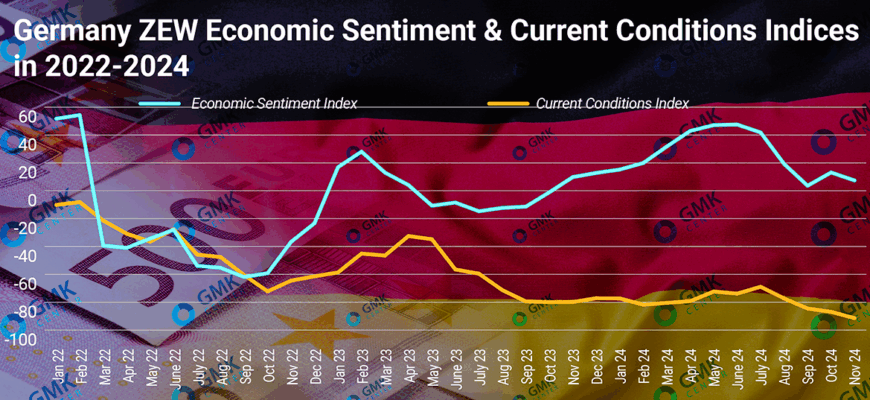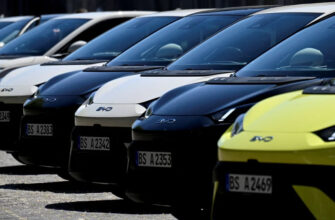- Shocking News: No Growth Expected in 2025
- Looking Ahead: A Glimmer of Hope for 2026?
- The Ministry of Economy Keeps Quiet—Waiting for Answers
- Germany Stands Alone: The Only G7 Country in Decline
- Economic Institutes Sound the Alarm Too
- What’s Holding Germany Back?
- The Ripple Effect on German Businesses
- Is There Any Hope on the Horizon?
- What Does This Mean for Everyday Germans?
- A Wake-Up Call for Europe
Shocking News: No Growth Expected in 2025
The German government has just dropped a bombshell about the country’s economic outlook, and frankly, it’s hard not to feel frustrated. Initially, they predicted a modest GDP growth of 0.3% for 2025, but now they’ve slashed that forecast to zero. That’s right—Germany is now bracing for complete stagnation next year, according to Reuters. Honestly, this feels like a punch in the gut for a country that’s already been struggling to get back on its feet. What’s happening to one of Europe’s economic powerhouses?
Looking Ahead: A Glimmer of Hope for 2026?
Let’s take a peek at what’s expected a bit further down the road. For 2026, Berlin is forecasting a GDP growth of 1%. At first glance, that sounds like a small light at the end of the tunnel, but here’s the catch—it’s actually lower than the earlier January prediction of 1.1%. Sure, the difference might seem tiny, but it’s yet another sign that Germany’s economy is stuck in a rut. How did a country known for its robust industry and innovation end up in such a mess? It’s infuriating to see these downward revisions becoming a trend.
The Ministry of Economy Keeps Quiet—Waiting for Answers
Unfortunately, the German Ministry of Economy isn’t ready to talk just yet. When asked about the new forecasts, they declined to comment, pointing instead to a press conference scheduled for Thursday, April 24. I don’t know about you, but this silence is making me uneasy. Why the secrecy? If the situation is as bad as it seems, why not address it head-on? We’ll have to wait for the official statement, but in the meantime, the lack of clarity only fuels more worry about what’s really going on behind closed doors.
Germany Stands Alone: The Only G7 Country in Decline
Here’s where things get even more upsetting. Germany is the only G7 country whose economy has shrunk over the past two years. That’s a tough pill to swallow for a nation that’s long been a leader in global markets. And now, with new tariffs announced by U.S. President Donald Trump, there’s a real risk that 2025 could mark a third consecutive year of no growth. These tariffs, targeting steel, aluminum, and cars, are hitting Germany where it hurts most—its industrial backbone. It’s maddening to think that external policies could drag an entire economy down like this.
Economic Institutes Sound the Alarm Too
The bad news doesn’t stop there. German economic institutes have also revised their forecasts, and they’re not painting a pretty picture either. Back in September, they expected a 0.8% GDP growth for 2025, but now they’ve slashed that to a measly 0.1%. That’s basically stagnation, and the reason? You guessed it—those U.S. tariffs on steel, aluminum, and automobiles. This isn’t just about numbers anymore; it’s about real people. Factories are slowing down, jobs are at risk, and families are feeling the pinch. How did we get here?
What’s Holding Germany Back?
Let’s dig a little deeper into why Germany can’t seem to break free from this economic slump. Sure, the U.S. tariffs are a big problem, but they’re not the only issue. The country is grappling with internal challenges too. For one, energy prices have skyrocketed since Germany moved away from affordable Russian gas, and that’s putting a huge strain on industries. Factories that once ran at full capacity are now cutting back production just to survive. And then there’s the labor shortage—Germany’s population is aging, and there aren’t enough young workers to fill the gaps. It’s a frustrating mix of problems that seem to feed off each other.
The Ripple Effect on German Businesses
German businesses are feeling the heat, and it’s not hard to see why. The automotive sector, a cornerstone of the economy, is now struggling to cope with the new tariffs while also facing rising costs at home. Smaller companies are in an even tougher spot—without economic growth, people have less money to spend, which means fewer sales. It’s a vicious cycle: businesses cut back, lay off workers, and those workers then spend even less. Honestly, it’s infuriating to watch this unfold while the government seems to be moving at a snail’s pace to address the crisis.
Is There Any Hope on the Horizon?
So, is there any chance things might turn around? Some experts believe Germany could bounce back if it invests heavily in new technologies and green energy. It’s a long-term strategy that requires patience and funding, but it could pay off down the road. For now, though, all eyes are on the April 24 press conference. Hopefully, the government will share a solid plan to tackle this stagnation. I’m keeping my fingers crossed, because Germany—and its people—deserve better than another year of economic standstill.
What Does This Mean for Everyday Germans?
While economists and politicians crunch numbers, regular people are left wondering how this will affect their lives. If the economy doesn’t grow in 2025, we could see prices rise even more, and jobs could become harder to find. It might be a good time to tighten the belt—maybe hold off on big purchases like a new car or a house and look for ways to save a little extra. If this stagnation stretches into a third year, it’s going to hit everyone hard, from factory workers to small business owners.
A Wake-Up Call for Europe
Germany’s economic troubles aren’t just a national issue—they’re a warning for all of Europe. If a country this strong can’t get back on track, what does that mean for smaller economies in the region? With 2025 looking like a year of stagnation and only a modest 1% growth projected for 2026, the challenges are piling up. Between U.S. tariffs and domestic struggles, Germany has a tough road ahead. I can’t help but wonder: what will it take to turn things around? What do you think—does Germany have a fighting chance, or are we in for more tough years?









